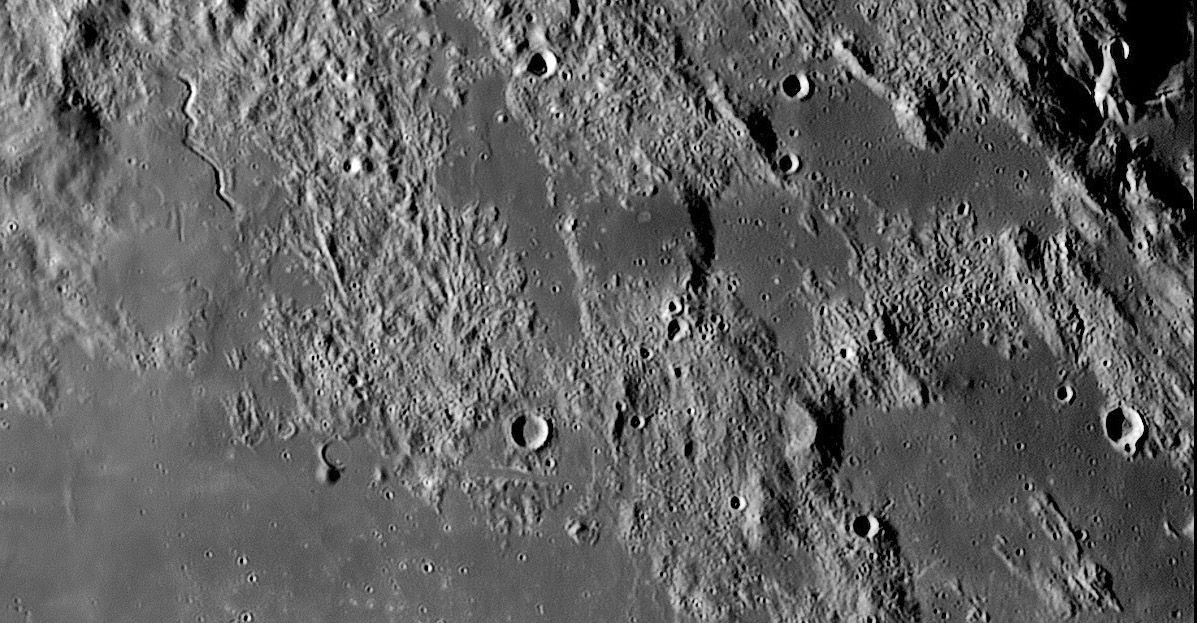September 14, 2023
Land of Lakes
Originally published August 30, 2013

image by George Tarsoudis, Alexandroupolis, Greece
Behind the towering peaks of the Apennine Front and beyond the swirls of pasty ejecta that cover the the backslope of the Apennines are a
series of basaltic holes in the Imbrium ejecta. These distinctive patches of dark lakes (lacus in Latin) and bays (sinus) are obviously places
where volcanism occurred but in two of them the manifestation was quite interesting. At the western end of the holes is Sinus Fidei, whose
lavas - trust me on this - presumably erupted from the sinuous Conon Rille. The lavas here seem to be on top of the ejecta but strangly almost
no ejecta protrude through them. Note to the bottom left of the rille there are some curved rimless depressions that are very similar to
collapse features in the midst of the Prinz Rilles. At bottom center is the short and unnecessarily named Yangel Rille. But the most unique
volcanic feature in these basalt backwaters is Ina which is in the center of a 700 - 800 m high elevated block whose covering lavas, I am
happy to inform you, are called Lacus Felicitatis. Ina looks like a heel print 50 m deep and a few kilometers wide. It is surrounded by a darkness that could have been erupted from the pit, but no obvious explosion centers are visible inside it. Ina is famous for having a very odd floor
and for possibly being very young - on the order of a few million years old. The lakes to the east have no remarkable features and appear to
simply be lavas filling low spots, perhaps explaining their unpleasant names...
Chuck Wood
Technical Details
Aug 27, 2013. SkyWatcher 14 inch @f/4.5 + Unibrain Fire-i 785 camera + red filter + Televue 3X barlow.
Related Links
21st Century Atlas chart 11.
LRO Names
George's webpage for images with his new 14" reflector.
The entire mosaic that today's LPOD is excerpted from.
Yesterday's LPOD: Broad Region of Pink
Tomorrow's LPOD: Lonely Twins
COMMENTS?
Register, Log in, and join in the comments.



